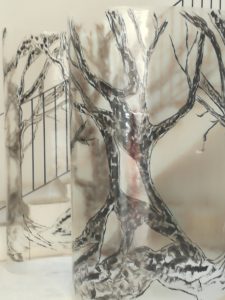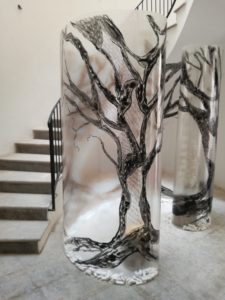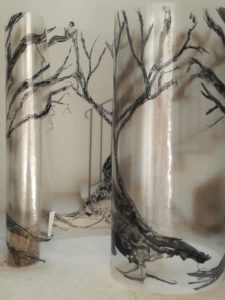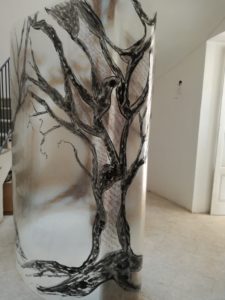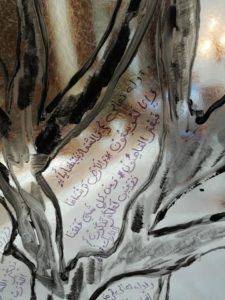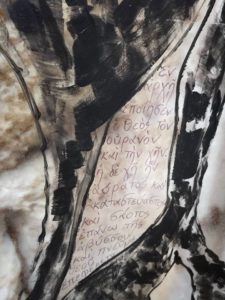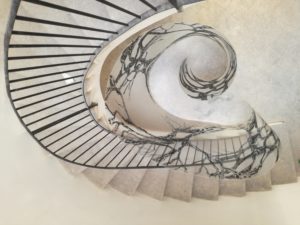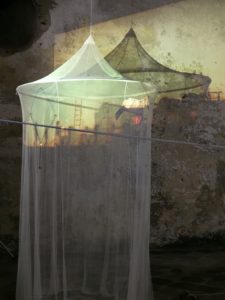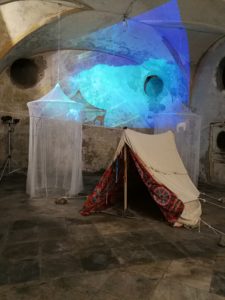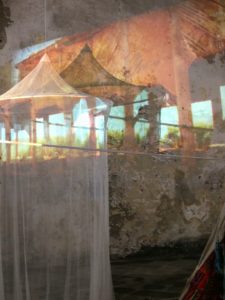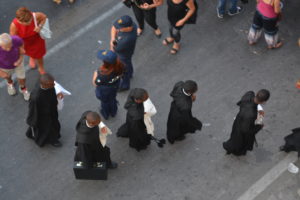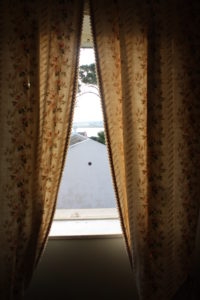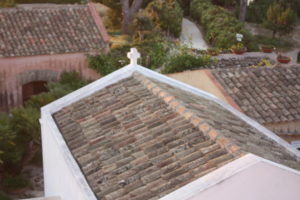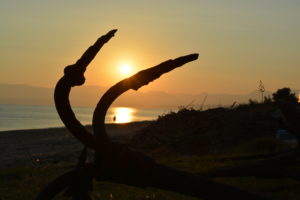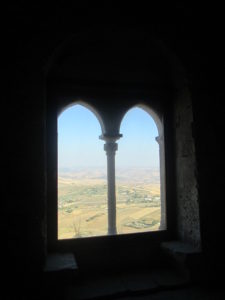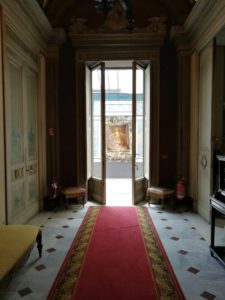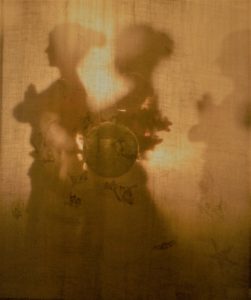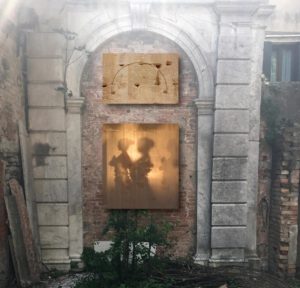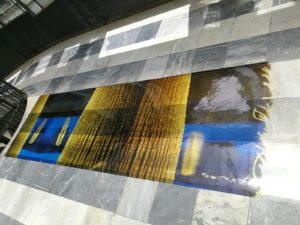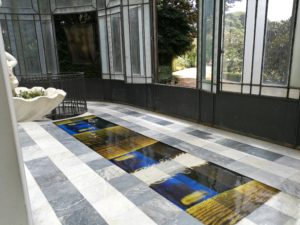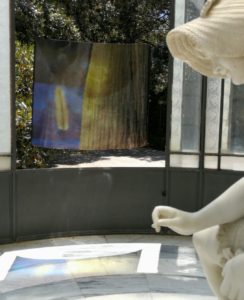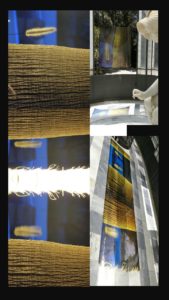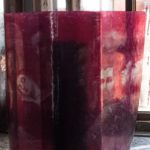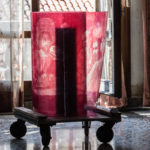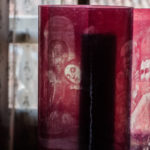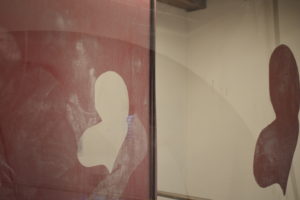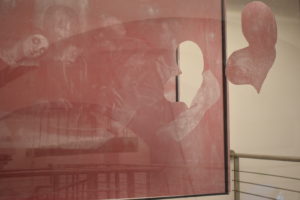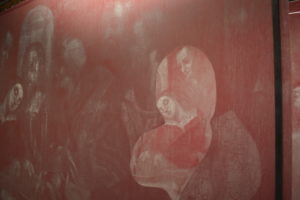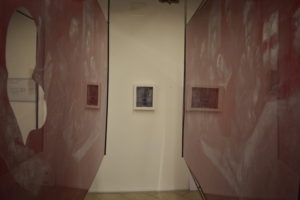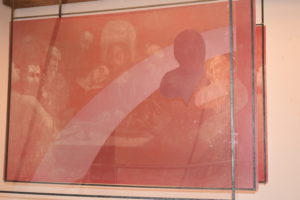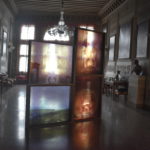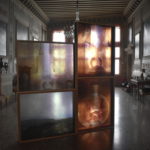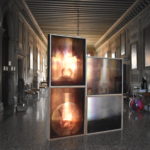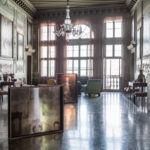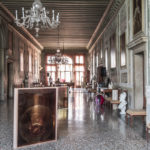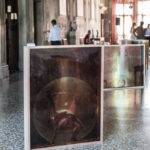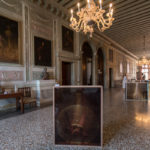LUPARA WITH TALCUM POWDER by Rosa Mundi | ARTE E ARCHITETTURA BIENNALE DI VENEZIA 2016 |GANG CITY – Spazio Thesis | Project from University Politecnico di Torino
GANG CITY (1) by Rosa Mundi for Politecnico di Torino 2016
Three photos set in three degraded neighborhoods of Palermo – the ZEN, the Conca d’Oro and Sferracavallo – become the scenery of an improbale cribliving of our century. The birth of Jesus ideally represents the birth of a child rejected by society, whose parents are forced to give it to light in a stable, a timeless symbol of the greatest poverty in all places and in all ages.
A child and a child interpret St. Joseph and Our Lady, the very young parents who do not receive any support from the world, from town, from the state and are forced to raise their children in a makeshift place – the crib of the crib – set at the foot of the center commercial, in the stairway of the ZEN that is the drooping popular houses of Palermo, and the cemetery of the sailors in the peninsula of Sferracavallo.
The “lupara borotalcata”, represents the union between the broken purity, visible in the gaze of the “baby godfather” wrapped in the blue mantle that
he stares at the lens defiantly. The lupara, the weapon becomes a game, a toy in the hands of a hand unaware of its being. There perception of life and the value of life will gradually become rare in the white of the talcum powder in which the lupara drowns.
The mids and interactive games breed the boys to belong to the Gang of good and evil where the strongest wins, where life has the value of a click to the computer, a click on the web.
The “gang” phenomenon has taken on the aspect of an armed conflict between small rival armies. Entire areas of small and large metropolis presented confederations of territories definable as free, ie without the state or pre-established authority, control of the public police. Each place is dominated and “protected” by a gang.
If once the sphere of influence of the gang was only the block, the district, the neighborhood, now, with the dizzying increase of the proceeds of activity illicit drugs, prostitution to receiving stolen goods. The gang has become a corporation whose tentacles extend over very large areas even places that are not “free”. Both its internal structure and its brutal efficiency have grown in parallel.
Every gang has a name, a uniform and a symbolic gesture of recognition, a sort of trademark copyright. They are the hard of the village in the neighborhood those that no one can challenge and look straight into the eyes of his interlocutor sure to be law because the law of the street makes them day to day. The “tough guys” who spend all their time patrolling their territory and challenging their rivals. The chronicles are filled with them
legendary of the poor neighborhoods. For them the gang is not a mafia organization for profit purposes, it’s the purpose of their lives.
The average age of the Gang is always lower, the new recruits are kids between the ages of thirteen and fifteen.
The gang does not need to recruit i children by force, it is a voluntary and natural adhesion movement because they are endocrine, they are volunteers, willing to have their purpose for which to live and die. Numerous classical institutions, such as the family, the school, the church, have become rarefied, the Gang becomes a place of belonging with the awareness and awareness on the part of the child and adolescent of his being a field that is otherwise free.
The typical profile is that of a boy raised by a single parent, often alcoholic, unemployed or drug addict. One of the factors that the gang proliferation is not what gang members are on the rise as well as what parents are on the rise these and therefore the children without parents.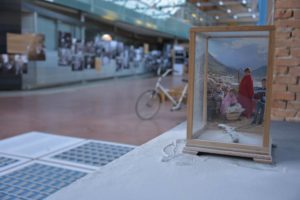
LA LUPARA AL BOROTALCO di Rosa Mundi
Tre foto ambientate in tre quartieri degradati di Palermo – lo ZEN, la Conca d’Oro e Sferracavallo – diventano lo scenario di un improbabile presepe
vivente del nostro secolo. La nascita di Jesus rappresenta idealmente la nascita di un bambino rifiutato dalla società, i cui genitori sono costretti a
darlo alla luce dentro una stalla, simbolo senza tempo della la povertà massima in tutti i luoghi e in tutti i secoli.
Un bambino ed una bambina interpretano San Giuseppe e la Madonna, dei giovanissimi genitori che non ricevono alcun sostegno dal mondo, dalla
cittadina, dallo Stato e sono costretti a crescere i loro figli in un luogo di fortuna – la capanna del presepe – ambientata ai piedi del centro
commerciale, nella scalinata dello ZEN ossia le case popolari cadenti di Palermo, ed il cimitero dei marinai nella penisola di Sferracavallo .
La “lupara borotalcata”, rappresenta il connubio tra la purezza infranta, visibile nello sguardo del “baby padrino” avvolto nel manto blu che
guarda fisso l’obiettivo con aria di sfida. La lupara, l’arma diventa un gioco, un giocattolo in mano ad una mano inconsapevole della suo essere. La
percezione della vita e del valore della vita si rarefà via via nel bianco del borotalco in cui la lupara affoga.
I medi i giochi interattivi allevano i ragazzi all’appartenenza a Gang del bene e del male ove vince il più forte, ove la vita ha il valore di un click al
computer, un click sul web.
Il fenomeno delle “gang” ha assunto l’aspetto di un conflitto armato fra piccoli eserciti rivali. Intere zone delle piccole e grandi metropoli presentato confederazioni di territori definibili come liberi, ossia sprovvisti dello Stato o dell’autorità precostituita, il controllo della polizia pubblica. Ciascun luogo è dominato e “protetto” da una gang.
Se una volta la sfera di influenza della gang era soltanto l’isolato, il quartiere, il rione, adesso, con l’aumentare vertiginoso dei proventi di attività illecite dalla droga, alla prostituzione alle ricettazione. La gang è diventata una corporazione i cui tentacoli si estendono su zone molto estese ed anche i luoghi non “Liberi”. Tanto la sua struttura interna quanto la sua brutale efficienza sono cresciute in parallelo.
Ogni gang ha un nome, una divisa e un gesto simbolico di riconoscimento una sorta di copyright di marchio. Sono i duri del villaggio del quartiere
quelli che nessuno può sfidare e guardano dritto negli occhi il suo interlocutore sicuri di essere legge perché la legge della strada la fanno loro
giorno per giorno. I “duri” che passano tutto il tempo a pattugliare il proprio territorio e a sfidare i rivali. E’ di loro che si riempiono le cronache
leggendarie dei quartieri poveri. Per loro la gang non e’ un’organizzazione mafiosa a scopo di profitto, e’ lo scopo della loro vita.
L’età media della Gang è sempre più bassa, le nuove reclute sono ragazzini fra i tredici e i quindici anni. La gang non hanno bisogno di reclutare i
bambini con la forza, è un movimento di adesione volontario e naturale perché endocrino, sono loro a offrirsi volontari, desiderosi di avere anche
loro uno scopo per cui vivere e morire.
Numerose istituzioni classiche, come la famiglia, la scuola, la chiesa si sono via via rarefatte la Gang diventa luogo di appartenenza con la non
consapevolezza e coscienza da parte del bambino e adolescente del suo essere un campo contrariamente libero.
Il profilo tipico e’ quello di un ragazzo allevato da un solo genitore, spesso alcoolizzato, disoccupato o tossicodipendente. Uno dei fattori che favoreggiano il proliferare della gang non e’ quello che sono in aumento i membri delle gang quanto quello che sono in aumento genitori come
questi e pertanto i figli senza genitori.
